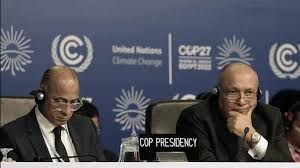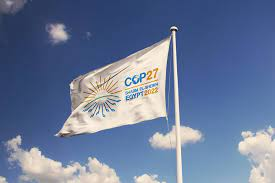The decision to establish a Loss and Damage fund, which will support developing countries in their efforts to avoid, minimise, and address loss and damage associated with the adverse effects of climate change in light of continued global warming, was made on Sunday morning at the UN Climate Conference (COP27) in Egypt’s Sharm El Sheikh. The conference, which saw polarised debates on responsibility and accountability among the global North and South, made history.

Developments made in the meet
Environmental experts hailed the recognition of the impact of climate change, notably the warming of 1.1 degrees C to date, on people’s lives and livelihoods as a significant development. According to the decision on the Loss and Damage Fund, reducing future global average temperature rise to below 1.5 degrees C will be crucial to limiting future loss and damage. The Working Group II to the Sixth Assessment Report of the Intergovernmental Panel on Climate Change has concluded that With each incremental fraction of a degree in temperature increase, the severity, extent, and frequency of loss and damage will continue to rise.
It has also been decided to form a transitional committee inorder to reach a consensus on the sources and modalities which would be considered at COP28 in November–December next year, in 2024. The Transitional Committee is designed to consist of 23 members which would have 10 members from developed country parties and 13 members from developing country parties , respectively.
The Committee will be focusing on the following
(a) Establishing institutional arrangements, modalities, structure, governance and terms of reference of the fund
(b) Defining the elements of the new funding arrangements
(c) Identifying and expanding sources of funding
(d) Ensuring coordination and complementarity with existing funding arrangements.
Developed nations pushed for the donor pool to be widened to include high-income nations and developing nations like China and India, and they wanted to limit the recipients to only the most vulnerable (island nations and least developed countries).
In addition, the EU had aimed to tie the establishment of the Loss and Damage funding to mitigation actions like peaking global emissions before 2025, reiterating the call to reduce non-carbon dioxide greenhouse gas emissions by 2030, pressing all parties to urgently increase their efforts to close the remaining mitigation gap to pathways consistent with 1.5 degrees, accelerating the phase-down of unabated coal power as soon as possible, and submitting roadmaps toward achieving this goal.
After several attempts and efforts at negotiations to reach a compromise, the issue of source of funding has now been handed over to the transitional committee.

COP27 Reaches Breakthrough Agreement on New “Loss and Damage” Fund for Vulnerable Countries
Reactions to the COP27 meet
The Sharm El Sheikh deal has disappointed the EU and UK to an unsurprising degree. Their efforts to accelerate the phase-down of unabated coal power and submit roadmaps to that effect, to phase out unabated fossil fuels, to start the conversation about expanding the donor base to include high income and emerging economies, and to push for the peaking of global emissions before 2025 were in a sense thwarted.
The COP27 resolution, according to UN Secretary General Antonio Guterres, managed to protect climate justice. He said that COP27 was held to manage the “problem of biblical proportions” which is the state of the climate.
Meanwhile for India , the COP27 was termed as “historic”. Union Environment Minister Bhupender Yadav addressed the presidency and commended them for their tireless efforts to advance consensus regarding the matter at hand. He also added that going in line with efforts to address climate change, the inclusion of transition to sustainable lifestyles and sustainable patterns of consumption and production in the cover selection would also be made.

COP 27 : A new wave of change ?
Just transition cannot be equated with decarbonization for the majority of poor nations, but rather with low-carbon development. For developing nations to achieve the SDGs, they must be free to choose their energy mix. Therefore, a key component of the global transition is developed countries taking the initiative on climate action, the expert continued.
It was a historic day for climate change negotiations that after thirty years, it has been acknowledged that historical cumulative emissions are to blame for an increase in disasters that cause Loss and Damage (both economic and non-economic), affecting communities and countries that are least at fault. The National Disaster Management Authority’s joint secretary and India’s chief negotiator on loss and damage, Kunal Satyarthi, stated that efforts have started by developing a funding mechanism to address such a facility.
The COP27 has issued a warning to polluters that they can no longer get away with causing climate change by creating a new Loss and Damage Fund. They are now responsible for the harm they bring to the people who are dealing with heightened storms, catastrophic floods, and rising seas, and they must pay for the damages they inflict. According to Harjeet Singh, Head of Global Political Strategy, Climate Action Network International ,the new fund must now be fully functioning in order to assist the most vulnerable individuals and communities bearing the brunt of the climate crisis and hence help in bringing about actual change.
References :
READ MORE:COP27 : Negotiations still in progress












